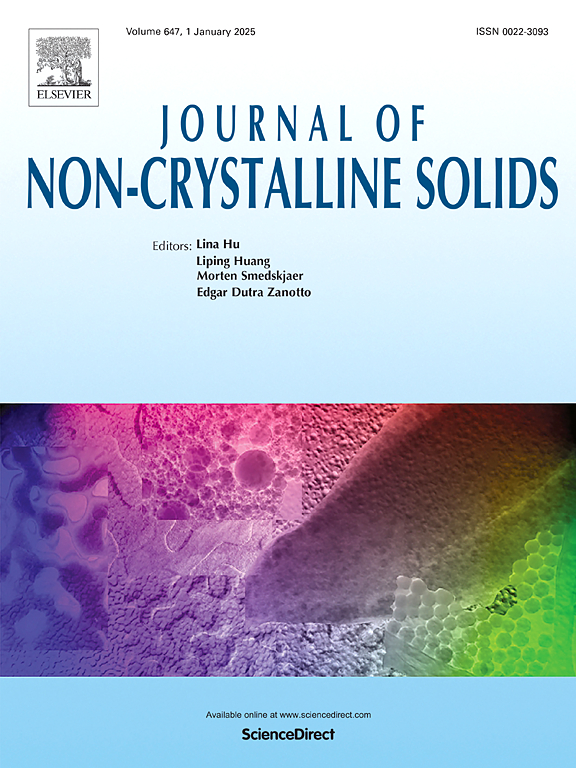Effects of Mo addition on anti-corrosion and mechanical properties of Al coating deposited sintered Nd-Fe-B magnets
IF 3.5
3区 材料科学
Q1 MATERIALS SCIENCE, CERAMICS
引用次数: 0
Abstract
Due to the poor mechanical properties and insufficient corrosion resistance of Al coating on sintered Nd-Fe-B magnets, the effect of the addition of Mo as well as the ratio of Al and Mo during the co-deposition process are systematically investigated. The Al75Mo25 coating with the amorphous structure exhibits the superior corrosion resistance because of the flatter surface and dense passivation film, which cuts off the rapid propagation channel of the corrosion medium such as Cl-. The corrosion current density of the Al75Mo25 coating reaches 6.1 × 10-7 A·cm-2, which is about one-third of the Al coating. Additionally, the coating demonstrates excellent mechanical properties, and the hardness of the coating increased from 0.41 GPa for the Al coating to 6.52 GPa. Furthermore, the amorphous coating does not compromise the magnetic properties of the Nd-Fe-B substrate. The results show that the addition Mo within limits can improve the anti-corrosion and mechanical properties of the Al coating. The work above clearly illustrates the practical value of the Al-Mo amorphous coating in improving the surface protection effect for the magnets. The work provides a promising way for improving the properties of Al coated sintered Nd-Fe-B magnets.
Mo添加对烧结Nd-Fe-B磁体Al涂层防腐性能和力学性能的影响
针对烧结Nd-Fe-B磁体上Al涂层力学性能差、耐蚀性不足的问题,系统研究了共沉积过程中Mo的加入以及Al和Mo的比例对共沉积过程的影响。具有非晶结构的Al75Mo25涂层由于表面平坦,钝化膜致密,切断了Cl-等腐蚀介质的快速传播通道,具有优异的耐蚀性。Al75Mo25涂层的腐蚀电流密度达到6.1 × 10-7 A·cm-2,约为Al涂层的1 / 3。此外,涂层表现出优异的力学性能,涂层硬度由Al涂层的0.41 GPa提高到6.52 GPa。此外,非晶涂层不会损害Nd-Fe-B衬底的磁性能。结果表明,在一定范围内添加Mo可以改善Al涂层的抗腐蚀性能和力学性能。上述工作清楚地说明了铝钼非晶涂层在提高磁体表面保护效果方面的实用价值。本研究为改善Al包覆烧结钕铁硼磁体的性能提供了一条有希望的途径。
本文章由计算机程序翻译,如有差异,请以英文原文为准。
求助全文
约1分钟内获得全文
求助全文
来源期刊

Journal of Non-crystalline Solids
工程技术-材料科学:硅酸盐
CiteScore
6.50
自引率
11.40%
发文量
576
审稿时长
35 days
期刊介绍:
The Journal of Non-Crystalline Solids publishes review articles, research papers, and Letters to the Editor on amorphous and glassy materials, including inorganic, organic, polymeric, hybrid and metallic systems. Papers on partially glassy materials, such as glass-ceramics and glass-matrix composites, and papers involving the liquid state are also included in so far as the properties of the liquid are relevant for the formation of the solid.
In all cases the papers must demonstrate both novelty and importance to the field, by way of significant advances in understanding or application of non-crystalline solids; in the case of Letters, a compelling case must also be made for expedited handling.
 求助内容:
求助内容: 应助结果提醒方式:
应助结果提醒方式:


